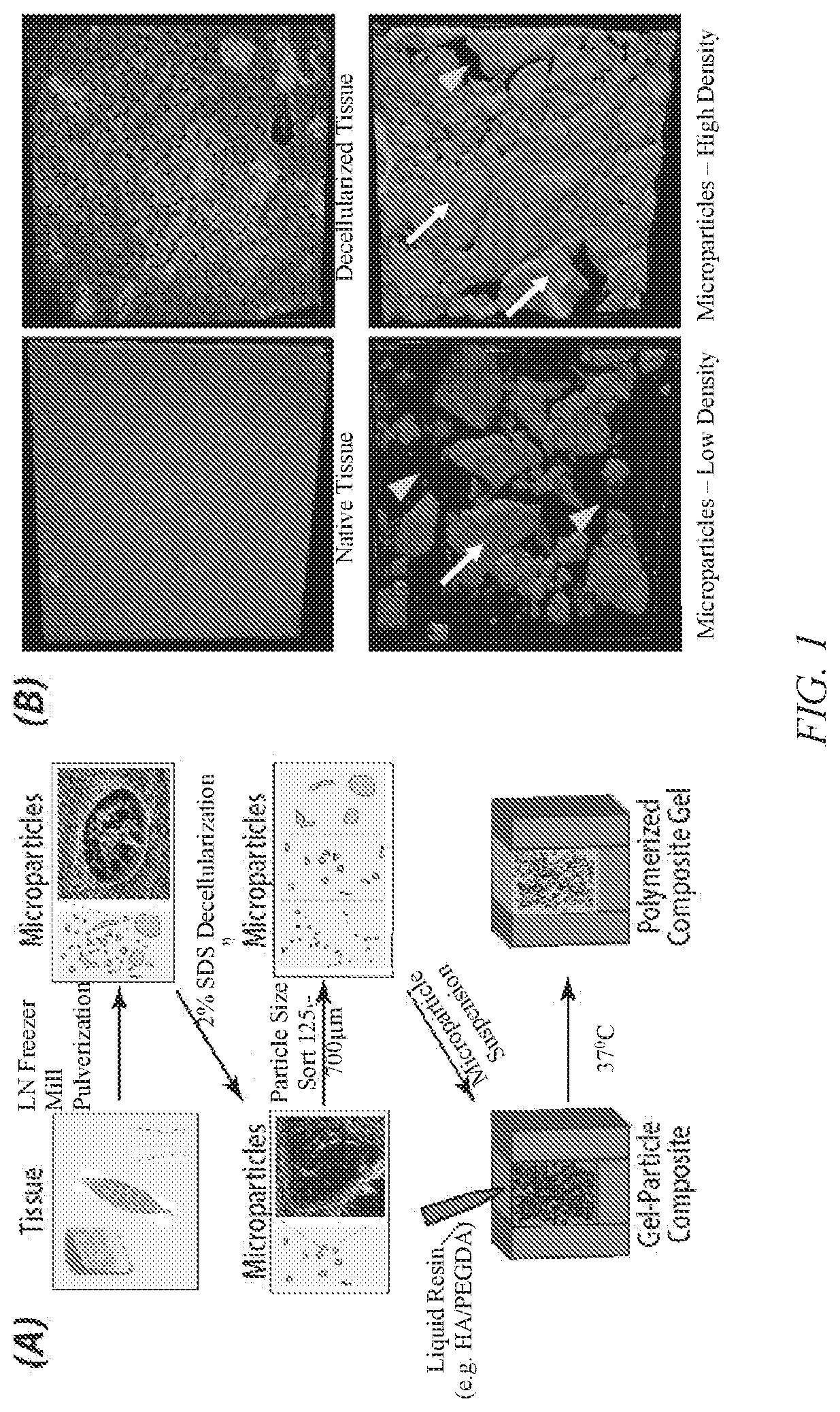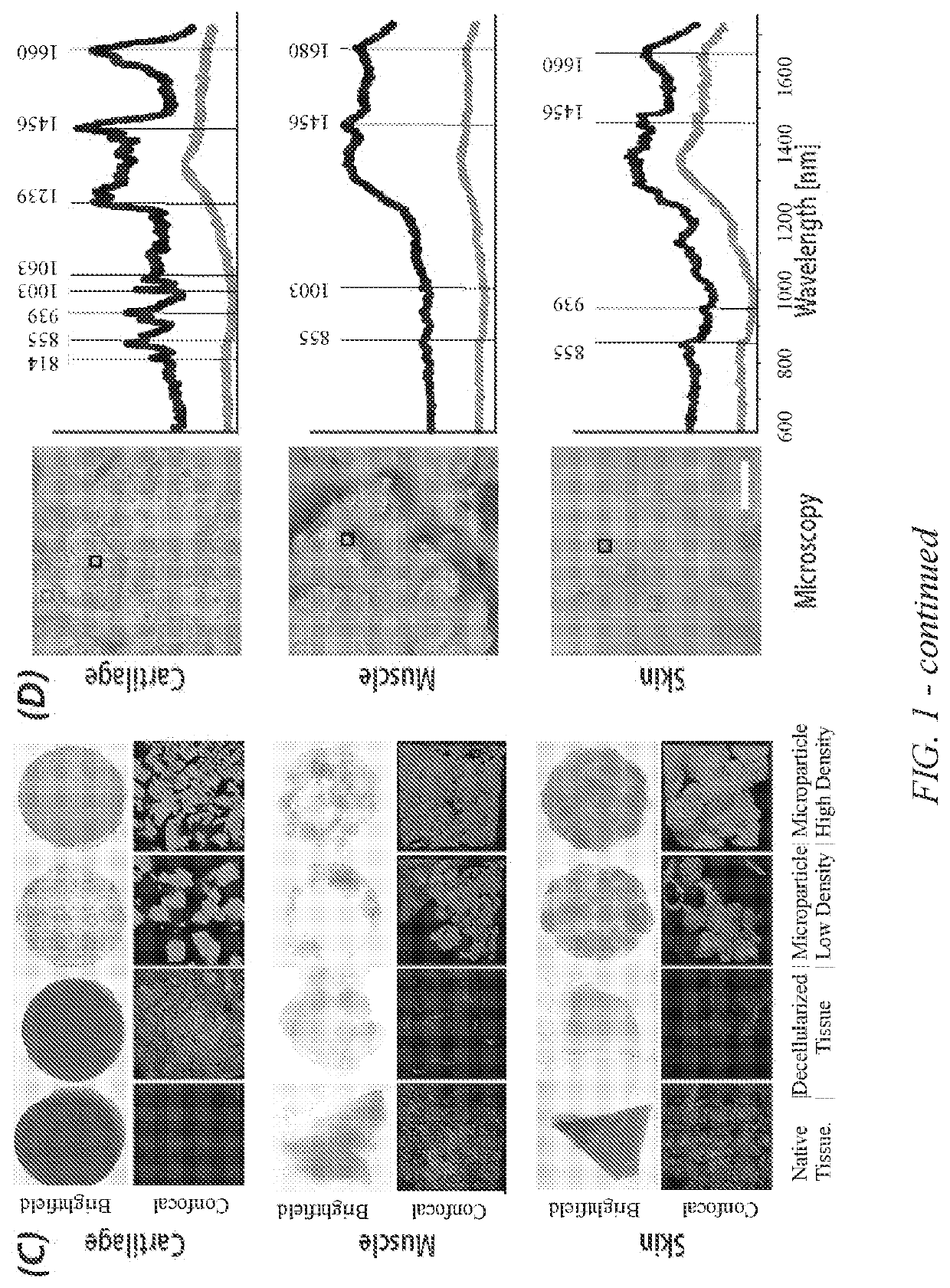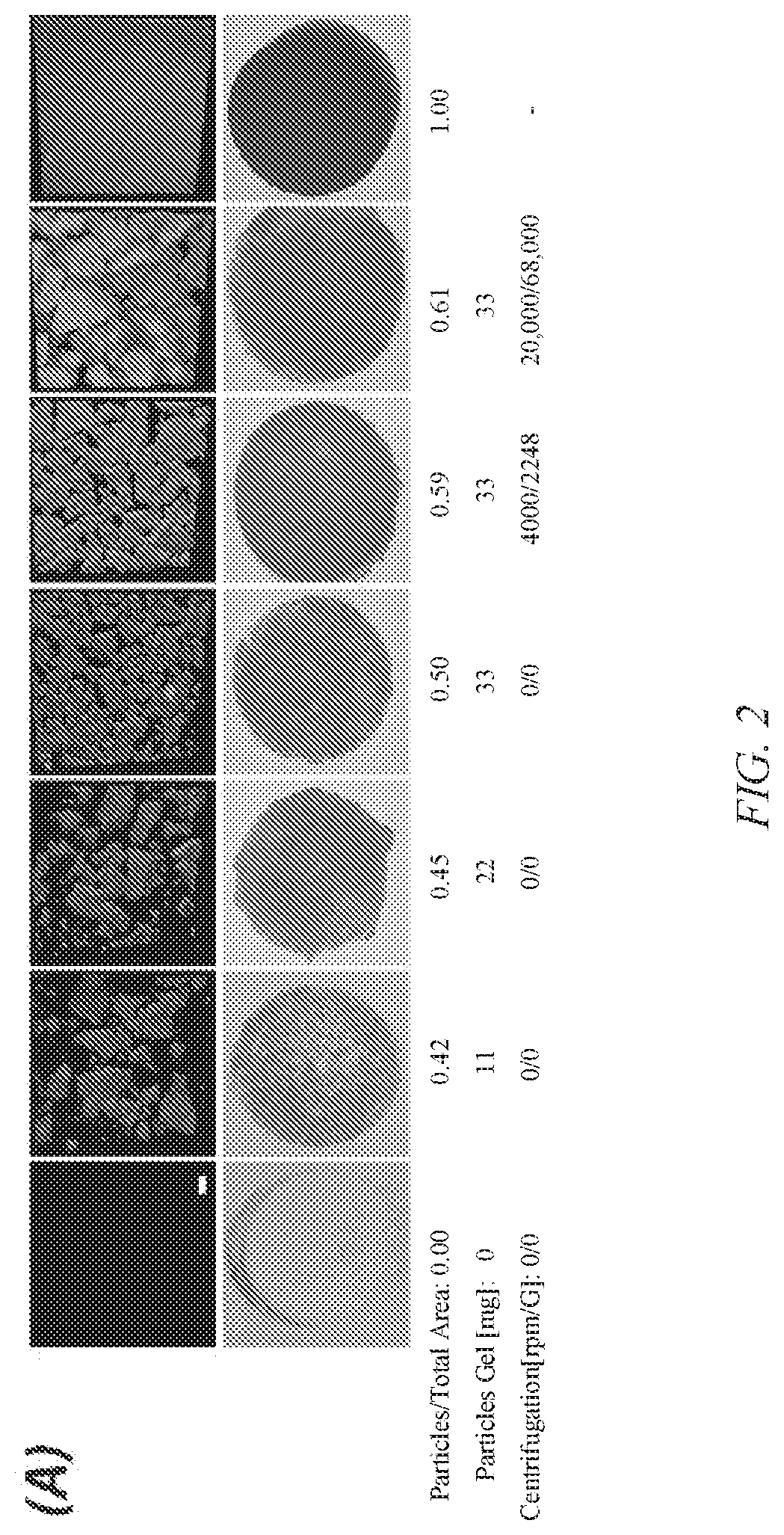Methods and compositions for particulated and reconstituted tissues
a tissue and composition technology, applied in the field of tissue healing and repair, can solve the problems of poor diffusion characteristics and cellular infiltration of large decellularized cartilage allografts, failure to achieve clinically relevant mechanical properties required for implant survival, and loss of function of any of these tissues carries foreboding consequences for the human body, so as to achieve immediate and long-term impact on patient care and restore function
- Summary
- Abstract
- Description
- Claims
- Application Information
AI Technical Summary
Benefits of technology
Problems solved by technology
Method used
Image
Examples
example 1
d Microparticle Construct for Particulated and Reconstituted Cartilage for Cartilage Replacement and Repair—Overview
[0041]The present invention provides methods and compositions for particulated and reconstituted tissues as shown by way of example in FIGS. 1 and 5. The methods include the steps of pulverization, decellularizing, and size sorting specific tissue microparticles. These particles are then applied to a defect of their particular tissue type, and reinforced with a polymerizable resin that mixes with native stem cells and natural growth factors in the recipient's blood or bone marrow.
[0042]The methods taught herein enable the growth of scaffold-reinforced microparticle tissues for regenerative applications. Tissue specific particles (e.g. cartilage, skin, muscle, spinal cord) are encapsulated in a resin at their percolation threshold, with the minimum amount of resin applied as possible to simply to hold together the scaffold (FIG. 4). As a result, small tissue micropartic...
example 2
d Microparticle Construct for Particulated and Reconstituted Cartilage for Cartilage Replacement and Repair—Materials and Methods
[0046]Tissue Particulation:
[0047]Tissues harvested from animal or human sources are first devitalized (flash frozen). Particulation is accomplished using a variety of methods, including mortar and pestle, or a liquid nitrogen freezer mill. Particulated tissues are size-sorted using sieves in standard sizes, e.g. 0-60 microns, 60-120 microns, 120-250 microns, 250-500 microns, 500-1000 microns, and greater than 1000 microns. Particles are decellularized using standard detergents with or without subsequent DNA removal.
Collagen Gel Resin:
[0048]Oligomeric collagen is derived and sterilized as previously described. [J. L. Bailey, et al., Biopolymers 2011, 95, 77.] This formulation was standardized based upon purity and polymerization potential as described in the ASTM standard guidance document F3089-14. [American Society for Testing and Materials, Standard Guid...
example 3
d Microparticle Construct for Particulated and Reconstituted Cartilage for Cartilage Replacement and Repair—Application
[0059]Soft tissue trauma to articular cartilage often results in degradation of joints, detrimental loss of ability to perform tasks and mobility, and increased pain and associated healthcare costs. The present invention employs decellularized and particulated tissues that promote joint preservation and restoration as a preferred option to joint loss or replacement, which will benefit orthopaedic injuries sustained by military personnel and the public at large.
[0060]The present disclosure demonstrates the percolation limits of decellularized microparticles in tunable HA / PEGDA gels to facilitate an understanding of how construct architecture influences cell signaling and mechanical integrity, and to advance new treatment options for cartilage defects that otherwise ultimately progress to OA.
[0061]There is currently no suitable cartilage tissue repair method following...
PUM
 Login to View More
Login to View More Abstract
Description
Claims
Application Information
 Login to View More
Login to View More - R&D
- Intellectual Property
- Life Sciences
- Materials
- Tech Scout
- Unparalleled Data Quality
- Higher Quality Content
- 60% Fewer Hallucinations
Browse by: Latest US Patents, China's latest patents, Technical Efficacy Thesaurus, Application Domain, Technology Topic, Popular Technical Reports.
© 2025 PatSnap. All rights reserved.Legal|Privacy policy|Modern Slavery Act Transparency Statement|Sitemap|About US| Contact US: help@patsnap.com



